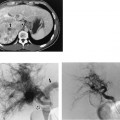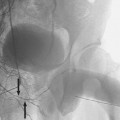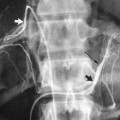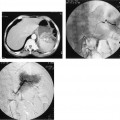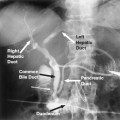13
Physician Health and Safety in the Angiography Suite
 Infectious Risks
Infectious Risks
Non-bloodborne pathogens
Although blood-borne pathogens may stimulate more concern among health care workers (HCWs) and patients, certain non-bloodborne agents are also important, particularly in hospital settings. Many pathogens are transmitted by droplet infection or by direct contact. Influenza and childhood diseases such as measles and rubella can be transmitted between HCWs and patients. Patients can be infected by asymptomatic HCWs harboring these viruses, hence the recommendation that all HCWs be vaccinated against these three diseases. The elderly, the immunocompromised, and those with chronic diseases are at greatest risk for influenza. Immunity to rubella is important for women of childbearing age because severe fetal damage may result from congenital infection.
The incidence of tuberculosis (TB) is increasing across the United States, especially in large cities.1,2 Most worrisome is the emergence of multidrug resistant (MDR) strains, which can cause fulminant, rapidly fatal infection, particularly (but not only) in human immunodeficiency virus (HIV) -positive persons. HCWs in several cities have been infected on the job, and several have died as a result.3 Patients with known or suspected active TB infection should wear masks or particulate respirators, if possible, while undergoing procedures outside approved isolation rooms. Standard face masks do not filter particles in the droplet size range (1–5μm) and are not adequate to prevent the spread of TB; for this reason, particulate respirators are preferred.4 All radiology personnel involved in procedures on patients with active TB should wear respirators if possible.
Methicillin-resistant Staphylococcus aureus (MRSA), a serious problem in many hospitals, may be found in the nares or on the skin of HCWs and is spread primarily by the hands (5). Handwashing is critical in preventing transmission of MRSA; gloves, gowns, and masks should be used when caring for patients with this infection.5
Bloodborne pathogens
The most important agents in this category are HIV and the hepatitis viruses. Concern about nosocomial transmission of these agents has increased dramatically in the past few years.
Scope of the problem
Although a great deal of publicity and concern has centered on HIV, hepatitis B and C should be regarded as equally serious because these viruses are both more prevalent and more infectious than HIV6 More than 20 outbreaks of HCW to patient transmission of hepatitis B virus (HBV) have been reported, and the Centers for Disease Control and Prevention (CDC) estimates that 8,000 to 12,000 HCWs are infected with HBV on the job each year. Of these, 10% will become chronic viral carriers; about 200 deaths of HCWs are attributed to HBV-related disease each year.7 Between 3 and 14% of the general population have serologic evidence of HBV exposure (>50% for foreign-born Asians), and 0.2 to 13% are chronic carriers. Among hospitalized patients, at least 1% are HBV carriers, most asymptomatic and unaware of their carrier status.7 Hepatitis C virus (HCV) is also prevalent in certain groups: studies indicate exposure in 1 to 4% of HCWs, 12% of dialysis patients, and 50 to 80% of injecting drug users and hemophiliacs.8,9
The prevalence of HIV infection in the United States is estimated to be about 1% in the general population.10 although it is higher in certain groups, such as emergency department patients (6%)11 and young urban adults treated for penetrating trauma (19% in one study).12 The prevalence of HIV infection among patients in acute care hospitals ranges from 0.2% to 14.2%.13
Means and risk of transmission
Transmission of HIV, HBV, and HCV occurs through blood contact and sexual contact. In the health care setting, this generally involves needlestick injuries, but contact with mucous membranes or nonintact skin also has resulted in HIV infection.14 Transmission after contact with intact skin has not been reported. In addition to blood, other body fluids may be infectious. HIV has been detected in saliva, semen, vaginal secretions, breast milk, amniotic fluid, synovial fluid, cerebrospinal fluid, and serous exudates from infected persons.7 HBV can be present in most of these fluids, too, as well as in urine and feces.7 HCV has not been recovered from vaginal fluid, semen, or saliva of chronically infected persons even when viremia is present, but otherwise has a distribution similar to that of HBV.7
HBV is a fairly hardy virus, able to survive on environmental surfaces for up to 7 days at room temperature, but it is killed by bleach and other high-level disinfectants.7 HIV is also readily inactivated by household bleach and other high-level disinfectants, but it is less robust and survives only briefly on surfaces at room temperature.7
The risk of infection after a single parenteral exposure depends on the infectivity of the source, the amount of blood or other fluid transferred, and other factors. Infectivity depends on the viral titers of the source. For HBV, the most infectious of the three viruses, the type of viral particle present in the blood is also important; hepatitis B e antigen (HBeAg) is the most infectious. Infection risk after one parenteral contact with HBV ranges from 7 to 30%;7 with HCV from 2 to 4%,7 and with HIV is about 0.4%.15,16 For a given procedure, the risk of infection depends on the likelihood of parenteral contact during the procedure and the source’s likelihood of infection in addition to the above factors.
The risk of HCW-to-patient transmission is unknown but probably is much lower than the risk in the opposite direction. For such transmission to occur, the HCW must be infected with a blood-borne agent and sustain an injury that causes bleeding (or have open, exudative skin lesions, in which case the HCW should avoid patient contact), and then his or her blood must come into parenteral contact with the patient. Perhaps the most common scenario in which this might occur in the angiography suite is if a needle is reused on the patient after being contaminated with the blood of an HCW after a needlestick injury. If such contact occurs and the HCW is HIV positive, the risk of infecting the patient probably would be about 0.4% (the same as for infection of an HCW after a single needlestick exposure).15,16 Computer modeling done by the CDC to estimate the risk of an HIV positive surgeon infecting a patient during a procedure yielded a range of 1/42,000 to 1/420,000 procedures.17 Modeling specific to vascular and interventional radiology has produced similar results, estimating the risk of infecting a patient to be 0.03 per million procedures if the radiologist’s HIV status is unknown and 7.5 per million procedures if the physician is HIV positive.18 The estimated risk of patient-to-physician transmission of HIV for a single procedure ranges from 0.03 to 7.5 per million.18
Blood contacts and injuries in vascular/interventional radiology
Needlestick injuries occur less often in interventional radiology than in surgery. A recent prospective study noted needlestick injuries in 0.6% of interventional radiologic procedures,19 compared with previously reported rates of 1.7 to 15.4% for surgical procedures.20–24 A national survey of interventional radiologists found an annual median injuryrate of 0.3,25 compared with anannual median of 2 in a survey of surgeons.26 Improper handling of sharps, such as leaving exposed sharps in the folds of a drape or under a towel, or recapping needles was a common source of injury to radiologists.19,25 Procedure duration, operator experience level, and elective versus emergency procedure status had no effect on the risk of injury, but the risk for nonvascular interventional procedures was slightly higher than for other types of cases.19 Cutaneous or mucous membrane exposures, including splashes to the face, eyes, or other areas, occured in 3% of cases.19 More than 70% of these blood contacts could have been avoided by using appropriate protective gear, such as gowns and goggles. Longer procedure duration was strongly associated with higher risk of such exposures,19 although not with higher risk of injury.
Glove perforations are another potentially important means of blood contact. Overall, occult perforations occur in 10% of gloves used for angiographic or interventional procedures, but the relationship between the length of time gloves are worn and the perforation rate is strong, with 2 hours being the dividing point between low and high risk.27 For this reason, it is prudent to change gloves during lengthy procedures at or before 2 hours of wear. Most of the holes are probably attributable to mechanical stresses, such as forceful hand injection or catching glove material in a stopcock, rather than actual sharp injuries.
 Risk-reduction Strategies
Risk-reduction Strategies
Universal precautions
The use of universal precautions (UP) has been recommended by the CDC since 1987 (Table 13-1.28 The basic tenet of UP is the assumption that blood and body fluids from all patients should be considered potentially infectious. Rather than targeting the use of blood and body fluid precautions to “high-risk” cases only, UP mandates their routine use. Adherence to CDC infection control recommendations, including use of UP, was voluntary until 1992, when federal law made it mandatory.7
Safety devices and personal protective gear
Many devices have been produced in attempts to reduce the risk of injury and blood contacts during procedures. “Needleless” intravenous systems (Fig. 13-1), self-sheathing needles, and needle-capping devices are among those in current use; improved containers for the disposal of sharps are now standard in most health care settings as well.
Several products have been designed specifically for interventional radiology, such as sharps holders for procedure trays, closed flush systems, closed-system drainage kits, and “bloodless” arterial puncture systems.29–33 Most of these products are slightly more expensive than standard versions (some of the needles may be significantly more expensive) and do not interfere with procedure performance. Tactile feel during guidewire introduction may be altered with the bloodless puncture devices, however, which should be kept in mind when these devices are used.34
| Adherence to universal precautions |
| Blood and body fluids from allpatients are potentially infectious |
| Use of safety devices and personal protective gear |

